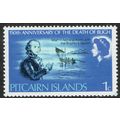Wuppertal, Germany - Schwebebahn (suspension railway) - postcard c.1970s
- Condition : Used
- Dispatch : 2 Days
- Brand : None
- ID# : 217464982
- Quantity : 1 item
- Views : 122
- Location : United Kingdom

- Seller : justthebook (+1703)
- Barcode : None
- Start : Wed 12 Jul 2023 08:32:43 (EDT)
- Close : Run Until Sold
- Remain : Run Until Sold
Checks/Cheques
 for 1 item(s) edit
for 1 item(s) edit
Shipping Calculator
More Listings from This Seller view all
Seller's Description
- Postcard
- Picture / Image: Wuppertal Schwebebahn (suspension railway)
- Publisher: Kruger
- Postally used: no
- Stamp: n/a
- Postmark(s): n/a
- Sent to: n/a
- Notes / condition:
Please ask if you need any other information and I will do the best I can to answer.
Image may be low res for illustrative purposes - if you need a higher definition image then please contact me and I may be able to send one. No cards have been trimmed (unless stated).
------------------------------------------------
Postage & Packing:
Postage and packing charge should be showing for your location (contact if not sure).
No additional charges for more than one postcard. You can buy as many postcards from me as you like and you will just pay the fee above once. Please wait for combined invoice. (If buying postcards with other things such as books, please contact or wait for invoice before paying).
Payment Methods:
UK and all other locations - PayPal or other methods listed above.
NOTE: All postcards are sent in brand new stiffened envelopes which I have bought for the task. These are specially made to protect postcards and you may be able to re-use them.
I will give a full refund if you are not fully satisfied with the postcard.
----------------------------------------------
Text from the free encyclopedia WIKIPEDIA may appear below to give a little background information (internal links may not work) :
*************
The Wuppertaler Schwebebahn ("Wuppertal Suspension Railway") is a suspension railway in Wuppertal, Germany.
Its original name was Einschienige Hängebahn System Eugen Langen ("Eugen Langen Monorail Overhead Conveyor System"). It is the oldest electric elevated railway with hanging cars in the world and is a unique system in Germany.
Designed by Eugen Langen and offered first to the cities of Berlin, Munich and Breslau who all turned it down,[2] the installation with elevated stations was built in Barmen, Elberfeld and Vohwinkel between 1897 and 1903; the first track opened in 1901. The railway line is credited with growth of the original cities and their eventual merger into Wuppertal.[2] The Schwebebahn is still in use as a normal means of local public transport, moving 25 million passengers annually, per the 2008 annual report.[3] New rail cars were ordered in 2015, called Generation 15, and the first new car went into service in December 2016.
The Schwebebahn runs along a route of 13.3 kilometres (8.3 mi), at a height of about 12 metres (39 ft) above the River Wupper between Oberbarmen and Sonnborner Straße (10 kilometres or 6.2 miles) and about 8 metres (26 ft) above the valley road between Sonnborner Straße and Vohwinkel (3.3 kilometres or 2.1 miles).[4][5] At one point the railway crosses the A46 motorway. The entire trip takes about 30 minutes.[5] The Schwebebahn operates within the Verkehrsverbund Rhein-Ruhr (VRR) and accepts tickets issued by the VRR companies.
The Wuppertaler Schwebebahn had a forerunner: in 1824, Henry Robinson Palmer of Britain presented a railway system which differed from all previous constructions. It was a low single-rail suspension railway on which the carriages were drawn by horses. Friedrich Harkort, a Prussian industrial entrepreneur and politician, loved the idea. He saw big advantages for the transportation of coal to the early industrialised region in and around the Wupper valley. Harkort had his own steel mill in Elberfeld; he built a demonstration segment of the Palmer system and set it up in 1826 on the grounds of what is today the Wuppertal tax office. He tried to attract public attention to his railway plans.
On 9 September 1826, the town councillors of Elberfeld met to discuss the use of a "Palmer's Railway" from the Ruhr region, Hinsbeck or Langenberg, to the Wupper valley, Elberfeld, connecting Harkort's factories. Friedrich Harkort inspected the projected route with a surveyor and a member of the town council. The plans never went ahead because of protests from the transport branch[clarification needed] and owners of mills that were not on the routes.
In 1887 the cities of Elberfeld and Barmen formed a commission for the construction of an elevated railway or Hochbahn. In 1894 they chose the system of the engineer Eugen Langen of Cologne, and in 1896 the order was licensed by the City of Düsseldorf.[5][6] In 2003, the Rhine Heritage Office (Rheinisches Amt für Denkmalpflege des Landschaftsverbandes Rheinland or LVR) announced the discovery of an original section of the test route of the Schwebebahn.
Construction on the actual Schwebebahn began in 1898, overseen by the government's master builder, Wilhelm Feldmann. On 24 October 1900, Emperor Wilhelm II participated in a monorail trial run.[5]
In 1901 the railway came into operation. It opened in sections: the line from Kluse to Zoo/Stadion opened on 1 March, the line to the western terminus at Vohwinkel opened on 24 May, while the line to the eastern terminus at Oberbarmen did not open until 27 June 1903.[4] Around 19,200 tonnes (18,900 long tons; 21,200 short tons) of steel were used to produce the supporting frame and the stations.[5] The construction cost 16 million gold marks. The railway was closed owing to severe damage during World War II, but reopened as early as 1946
Listing Information
| Listing Type | Gallery Listing |
| Listing ID# | 217464982 |
| Start Time | Wed 12 Jul 2023 08:32:43 (EDT) |
| Close Time | Run Until Sold |
| Starting Bid | Fixed Price (no bidding) |
| Item Condition | Used |
| Bids | 0 |
| Views | 122 |
| Dispatch Time | 2 Days |
| Quantity | 1 |
| Location | United Kingdom |
| Auto Extend | No |
















